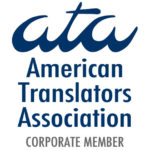An Article from NY Times reports:
By the middle of next year, Internet surfers will be allowed to use Web addresses written completely in Chinese, Arabic, Korean and other languages using non-Latin alphabets, the organization overseeing Internet domain names announced Friday in a decision that could make the Web more accessible.
In an action billed as one of the biggest changes in the Web’s history, the board of the Internet Corporation for Assigned Names and Numbers — or Icann — voted Friday during its annual meeting, held in Seoul, to allow such scripts in Internet addresses.
The decision is a “historic move toward the internationalization of the Internet,” said Rod Beckstrom, Icann’s president and chief executive. “We just made the Internet much more accessible to millions of people in regions such as Asia, the Middle East and Russia.”
This change affects domain names — anything that comes after the dot, including .com, .cn or .jp. Domain names have been limited to 37 characters — 26 Latin letters, 10 digits and a hyphen. But starting next year, domain names can consist of characters in any language. In some Web addresses, non-Latin scripts are already used in the portion before the dot. Thus, Icann’s decision Friday makes it possible, for the first time, to write an entire Internet address in a non-Latin alphabet.
Initially, the new naming system will affect only Web addresses with “country codes,” the designators at the end of an address name, like .kr (for Korea) or .ru (for Russia). But eventually, it will be expanded to all types of Internet address names, Icann said.
Some security experts have warned that allowing internationalized domain names in languages like Arabic, Russian and Chinese could make it more difficult to fight cyberattacks, including malicious redirects and hacking. But Icann said it was ready for the challenge.
“I do not believe that there would be any appreciable difference,” Mr. Beckstrom said in an interview. “Yes, maybe some additional potential but at the same time, some new security benefits may come too. If you look at the global set of cybersecurity issues, I don’t see this as any significant new threat if you look at it on an isolated basis.”
The decision, reached after years of testing and debate, clears the way for Icann to begin accepting applications for non-Latin domain names Nov. 16. People will start seeing them in use around mid-2010, particularly in Arabic, Chinese and other scripts in which demand for the new “internationalized” domain name system has been among the strongest, Icann officials say.
Internet addresses in non-Latin scripts could lead to a sharp increase in the number of global Internet users, eventually allowing people around the globe to navigate much of the online world using their native language scripts, they said.
This is a boon especially for users who find it cumbersome to type in Latin characters to access Web pages. Of the 1.6 billion Internet users worldwide, more than half use languages that have scripts that are not based on the Latin alphabet.
Hong Jong-gil, an Internet industry analyst at Korea Investment and Securities in Seoul, said the new names would help children and old people who had not learned the Latin alphabet. But he did not foresee any major increase in the number of Internet users because Internet penetration has less to do with whether one has to type in English-alphabet domain names and more to do with “whether you can afford a PC and your community has broadband access.”
Agencies that help companies and individuals get Internet domains welcomed the Icann decision, noting it would be good for their own businesses.
“This is great news for us. This opens a new demand for domain names,” said Yang Eun-hee, an official at Gabia.com, an Internet domain agency. “There will be a rush among businesses to get new local-language Web addresses to protect their brand names. These days, a big company typically has dozens or hundreds of domains for their products, and it will be quite a cost to get all the new names.”
Observers agree that the change could make a difference for many businesses. “A lot of companies will end up having double domains — the existing one in English and a new one in the local script,“ said Choi Kyoung-jin, an analyst at Shinhan Investment. “A Korean domain name may be useful for Koreans but it’s not for foreign customers.”
Users who do not use the Latin alphabet can now reach Web sites by asking search engines to provide their links.
But a change in the domain name policy has become inevitable, Internet industry officials said. For example, there are so many .com Web addresses that it has become next to impossible to find an English word or an intelligible combination of two English words not already in use, they said.
“Today’s decision opens up a whole new Internet territory,” Ms. Yang said. “The Internet will become more multi-lingual than before.”



